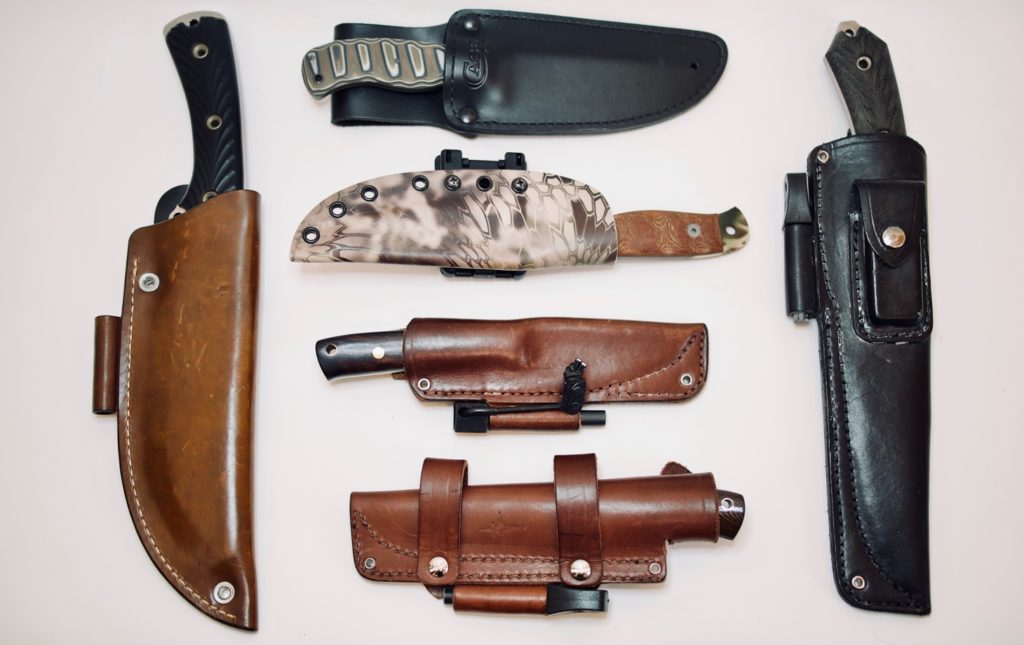We just published five new posts about field knives — the main fixed blade knife everyone should have as part of their basic preps. Which, combined with our recent review of the best survival knives, completes the basic set of info needed for most people:
- Learn how to sharpen and care for your field knife, including how to choose the right method and how to sharpen a knife with random stuff in an emergency
- Tips on when to buy an aftermarket sheath and what to look for
- The best pull-through sharpeners, which are a quick, cheap, and easy option for most people
- The best sharpening stones
- The best stropping gear
The guides are intended to give the high-level, most-important insights on a core piece of gear so critical that many emergency experts would pick a field knife if they were limited to surviving with only a handful of items. These knife-related skills and tools also help with daily life around the kitchen, camp, and workshop.
If you read through the guides and you find yourself wondering, “how and why does a person go this far down a knife maintenance rabbit hole,” I can tell you that in my case, it all started with wanting to learn how to properly sharpen my favorite knives without scuffing them up.
I’ve loved knives since I was nerdy 9-year-old in the 80’s, talking with anyone I could about the work of custom knife makers like Gil Hibben and Bob Loveless. But it wasn’t until my early 30’s that I learned how to put a high-quality, hair-popping edge on a knife without leaving the blade a mess of scuffs and marks.
Why did I wait so long to learn this basic skill? In a word, “YouTube.”
In the pre-internet world of my youth, knife sharpening was a mix of folklore and outright fiction. If you didn’t have a parent or Scoutmaster who could teach you correctly, then you bought a diamond stone and ground away at your knives as best you could until you got something like a working edge on them. Or, you handed them off to a friend or older relative who had a reputation for true competence at this rare skill.
But knife sharpening really isn’t that hard, and in the post-YouTube world there is no excuse for not being able to maintain a razor edge on a field knife with a minimum of fuss. And when you have the confidence that you can maintain a great edge on any knife you buy, without messing it up, that can serve as the foundation on which you build a broader base of useful knowledge about the many other aspects of working with and caring for edged tools of all kinds.
A stropping success story
Some time ago, I went on a guided hunt on a large game ranch in Central Texas, where I bagged a nice trophy buck, a doe, and a large sow hog. My guide, Gus, was an ornery high school football coach who relished letting me know exactly what he thought of anything and everything.
Every time we’d see a young buck that didn’t have a decent rack on him (i.e. not a “shooter” on a trophy buck hunt), Gus would declare him a “piece of @#$%.” I got the feeling that he didn’t spare the kids he coached any choice words, either.
On the last day of the hunt, it was time to drag all three animals out of the freezer and process them. I had brought along some knives for review, so I pulled one out and asked Gus to use it on the first deer. This knife came to me with a factory V-shaped edge, and that week I had started to convex it by stropping it, but I hadn’t gotten far enough so it wasn’t as sharp as I’d have liked.
Gus took the knife and made a few cuts with it, and silently handed it back to me with such a look of utter disdain and contempt on his face that I started to flush and feel like an idiot. So I reached in my pack and grabbed the customized Fallkniven F1 that I carried as my go-to for many years, and handed it to him.
The man just couldn’t get over it; it messed with his reality like seeing a UFO.
This F1 was the knife I learned to strop on, and its convex edge had never been touched by a stone or rod. I had stropped it on a dual-sided strop loaded with black compound on one side and green on the other, and then finished it off on strop loaded with white compound. Its polished edge didn’t feel sharp to the thumb the way the micro-serrated edge from a sharpening stone does, but it would definitely slice thin paper and shave hair.
Gus cleaned all three animals with that knife, and handed it back to me with awe and reverence. In all his decades as a hunter and guide, he’d never seen anything like it. He told me that normally he’d have had to stop and re-sharpen at least once during the first deer, and the hog would definitely have dulled the blade multiple times. But after going through all that game, the knife would still shave the hair off the back of my arm.
The man just couldn’t get over it; it messed with his reality like seeing a UFO. He’d lived his whole life without knowing such artifacts existed.
My guess is that Gus is a lot like I was back in the day, and just sharpened the way he was taught, free-handing as best he could on a stone or rod and just living with the fact that the edges he produced didn’t last very long.
But now Gus knows better, and after you read the guides, so will you.


You are reporting the comment """ by on